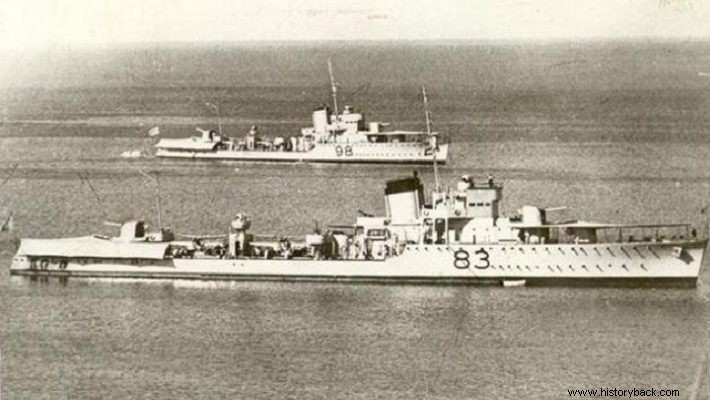
With the start of the war, it was decided that the Navy, in addition to its main mission, which was to cover the sea transport of the enlisted units of the Army, to also act aggressively.
Thus it was decided that two Greek destroyers, "Psara" and "Spetsai", under the general command of the captain at the time, Panagiotis Konstas, who was aboard "Psara", would sail to the Thesprotic coasts and bombard Italian positions, relieving at the same time , the hard-pressed Greek divisions of the "Coastal Sector" of the VIII Division.
The operation was particularly risky as the two Greek ships would have no air support and would be operating in an area where the adversary had absolute naval supremacy. Nevertheless it was executed.
At 06:50 on October 31, 1940, the two Greek destroyers – ironically, Italian-built, “Dardo” class – took firing positions. Captain Konstas ordered the destroyers to be flagged – if they sank they would sink with the flag flying, together festively ensigns!
“You've slowed to 7 mph. You raised a small flag and opened fire against the Italian line and the villages of Konispolis-Ano and Kato Sayada-Smerto-Filiates," the order said. Immediately the crews opened fire, cheering for each shell that left the muzzle of the cannon. "Your pasta, for our Elli", shouted the sailors.
Shortly after, explosions were heard from the shore and thick smoke rose. Italian warehouses were hit. The sight caused a frenzy of excitement, not only among the men of our destroyers, but also among our soldiers who were fighting on shore.
The latter jumped from the trenches and celebrated, trying to greet their colleagues at sea, to thank them, to congratulate them on their courage to defy the entire mighty Italian fleet of six battleships, dozens of cruisers and more than 100 destroyers.
Having completed their mission, the Greek destroyers turned south again and headed for their base, having proved that, despite his numerical inferiority, he was determined to fight to the end. It is worth noting that the operation was watched by crowds of Corfu residents, who, hearing the shots, came out of their houses and lined up on the beach and the old castle.
When they realized that the ships were Greek, an endless celebration broke out. With flags, handkerchiefs, hats, women with towels and tablecloths, they greeted the destroyers, which had now approached the Corfu coast, having taken a course towards the base, causing incredible emotion to the crews, who responded accordingly.
On the way back, a cute event also happened, when an observer, in the morning fog, took a rock for... an Italian cruiser. Konstas laughingly replied "I saw it" and burst into loud laughter. From that moment until the end of the war this particular sailor-observer did not dare to speak.
"Are you talking about turning rocks into battleships?", his colleagues would say to him.
Later, during the war, Greek destroyers did not hesitate to twice enter the Strait of Otranto and hit targets on Italian soil. .
Dardo class destroyers:Technical characteristics
Full displacement:2,050 tons
Length:92.3 meters
Bread:9.7 meters
Draft:3.8 meters
Crew:156 men
Horsepower:44,000 hp
Top speed:38 Knots
Armament:4 x 120mm guns, 2 x 40mm A/A/cannons, 4 x 13.2mm A/A heavy machine guns, 2 x 21in triple torpedo tubes, aiming capability 54 mines.
